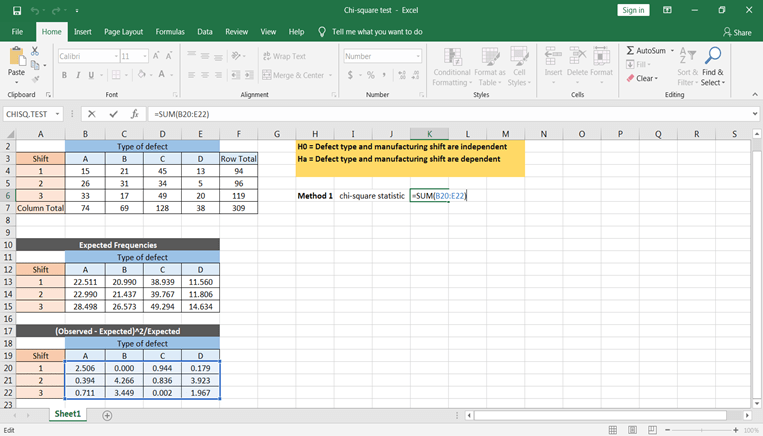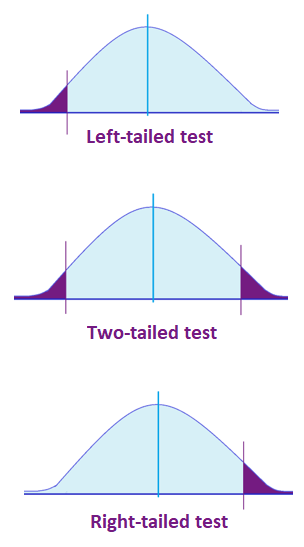


Using the sample data and assuming the null hypothesis is true, calculate the value of the test statistic.Specify the null and alternative hypotheses.Specifically, the four steps involved in using the P-value approach to conducting any hypothesis test are: And, if the P-value is greater than \(\alpha\), then the null hypothesis is not rejected. If the P-value is less than (or equal to) \(\alpha\), then the null hypothesis is rejected in favor of the alternative hypothesis. If the P-value is small, say less than (or equal to) \(\alpha\), then it is "unlikely." And, if the P-value is large, say more than \(\alpha\), then it is "likely." The null hypothesis is rejected when the z-statistic lies on the rejection region, which is determined by the significance level (\(\alpha\)) and the type of tail (two-tailed, left-tailed or right-tailed).The P-value approach involves determining "likely" or "unlikely" by determining the probability - assuming the null hypothesis were true - of observing a more extreme test statistic in the direction of the alternative hypothesis than the one observed. Type I error occurs when we reject a true null hypothesis, and the Type II error occurs when we fail to reject a false null hypothesis In a hypothesis tests there are two types of errors.The p-value is the probability of obtaining sample results as extreme or more extreme than the sample results obtained, under the assumption that the null hypothesis is true.The main principle of hypothesis testing is that the null hypothesis is rejected if the test statistic obtained is sufficiently unlikely under the assumption that the null hypothesis is true.Depending on our knowledge about the “no effect” situation, the z-test can be two-tailed, left-tailed or right-tailed.The main properties of a one sample z-test for one population mean are: The null hypothesis is a statement about the population mean, under the assumption of no effect, and the alternative hypothesis is the complementary hypothesis to the null hypothesis. The test has two non-overlaping hypotheses, the null and the alternative hypothesis. More about the z-test for one mean so you can better interpret the results obtained by this solver: A z-test for one mean is a hypothesis test that attempts to make a claim about the population mean (\(\mu\)).


 0 kommentar(er)
0 kommentar(er)
